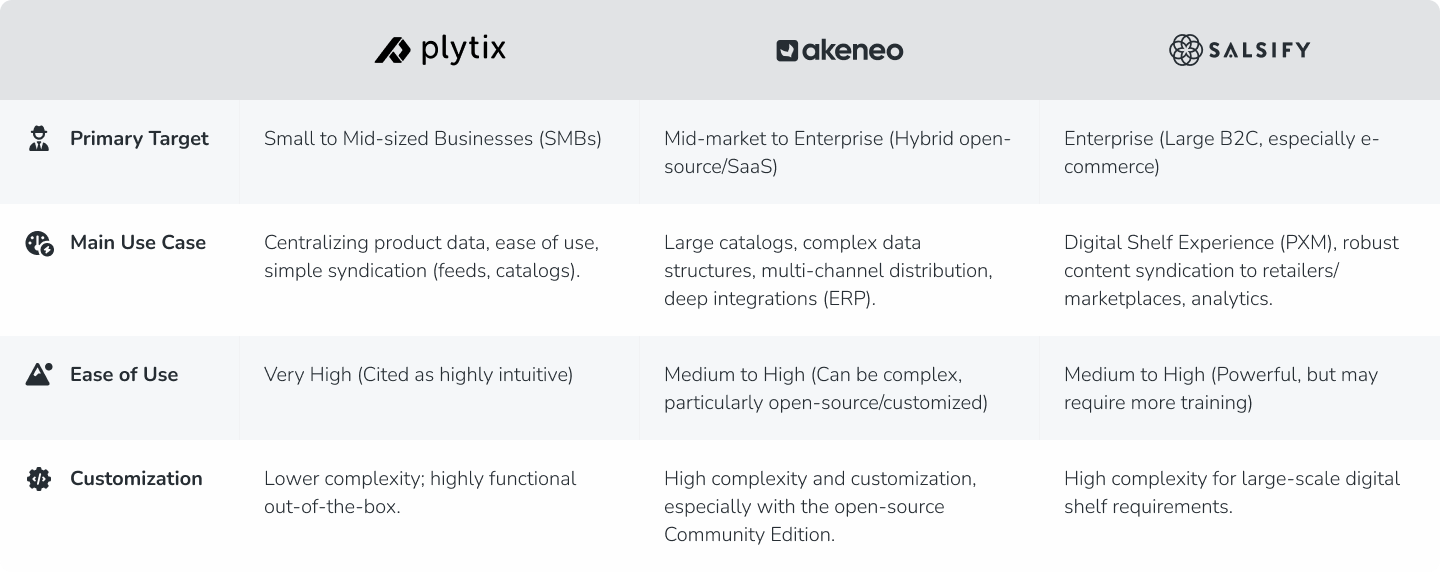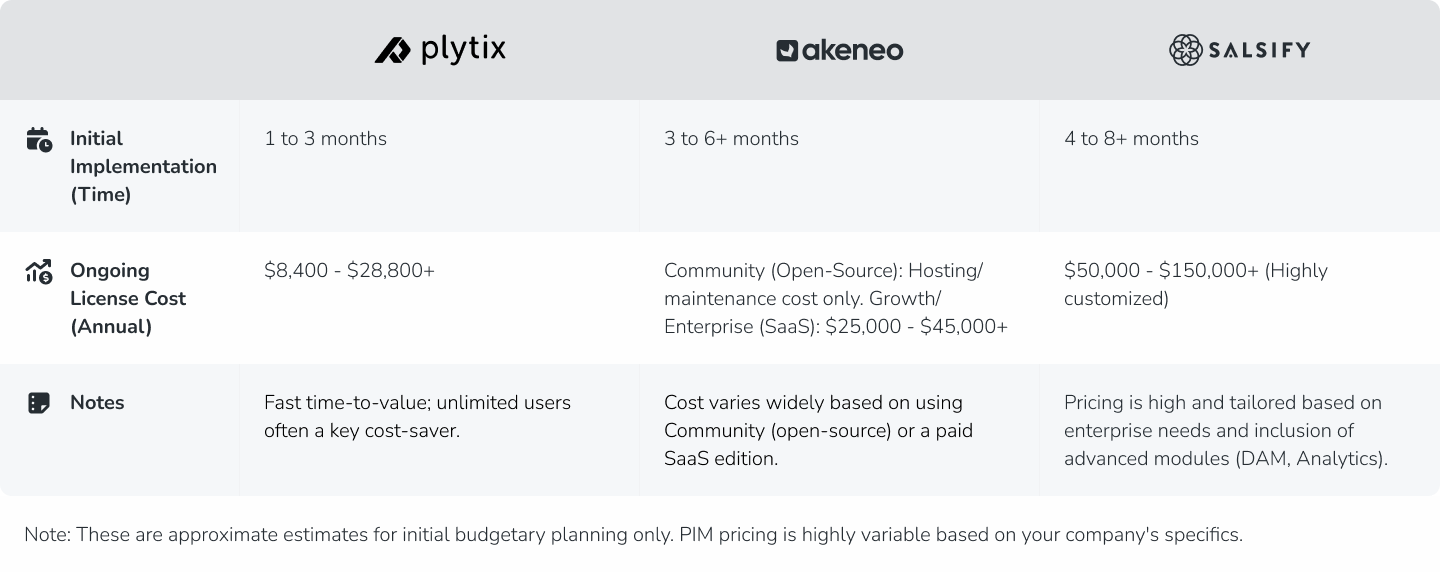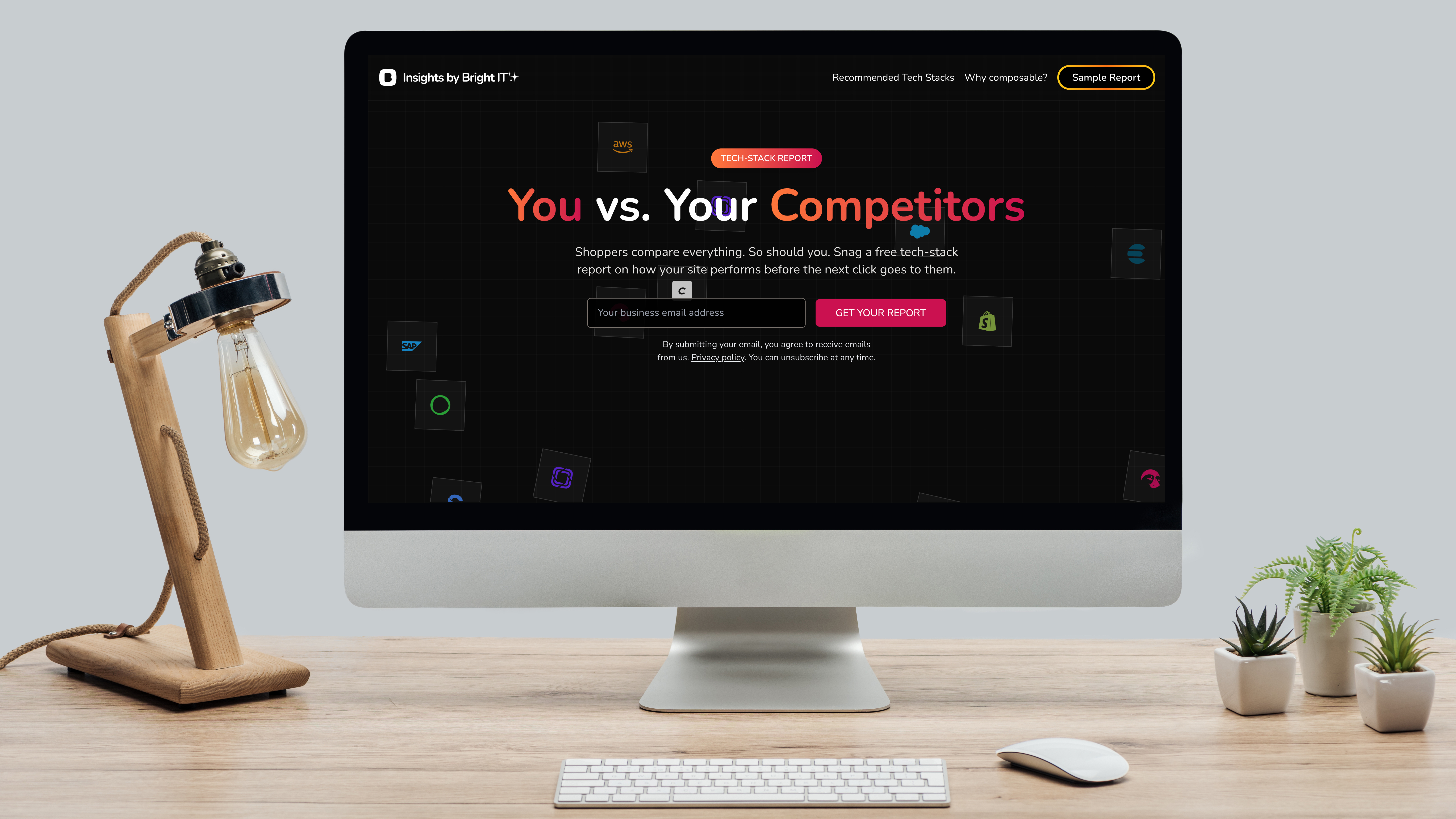1. Plytix: The User-Friendly Growth Partner
Plytix is built for growing companies, valuing fast implementation and high user adoption. It's the ideal choice when your primary need is centralizing data, managing media, and creating consistent product sheets and feeds.
Pros:
User-Friendliness: Consistently rated highly for ease of use, which translates to lower training costs and faster adoption.
Affordability & Transparency: Offers clear, public pricing tiers, often including unlimited users, which saves costs as your team expands.
Quick Implementation: Designed for rapid setup, frequently delivering a faster time-to-value (often less than 1-2 months).
Cons:
May lack some niche, highly advanced enterprise-level features or modules, such as deep digital shelf analytics.
Integrations may be more focused on e-commerce, digital catalogs, and feeds, potentially requiring more effort for highly bespoke ERP or legacy system connections.
2. Akeneo: The Flexible, Scalable Data Hub
Akeneo is best suited for organizations that have a large number of SKUs, complex product variations (e.g., a specific product in many sizes, pressures, and materials), and require deep, custom integration with their existing ERP or other systems. It is particularly favored by those with in-house or dedicated technical expertise.
Pros:
Flexibility & Open-Source: The Community Edition is free and open-source, providing maximum customization for technical teams.
Scalability: Well-suited for handling massive catalogs and complex data models.
Strong Ecosystem: Being open-source and a market leader provides a large network of integrators and developers.
Cons:
Implementation & Maintenance Cost: While the software is "free" (Community Edition), the total cost of ownership for implementation and ongoing maintenance can be very high, requiring technical resources.
User Complexity: Can be less intuitive for non-technical, content-focused teams without specific training.
SaaS Tiers are Pricey: The paid Growth and Enterprise editions are a significant financial commitment.
3. Salsify: The Digital Shelf Powerhouse
Salsify's strength lies in managing the entire "digital shelf". You would choose Salsify if your core business driver is selling through numerous, highly demanding retail channels and marketplaces (e.g., Amazon, Home Depot online) that require unique data formats and content for each channel.
Pros:
Digital Shelf Experience (PXM): Extends beyond PIM to include features like workflow automation, rich content syndication, and digital shelf analytics.
Robust Syndication: Strongest in this group for connecting and tailoring content to numerous, complex retail channels and marketplaces.
Enterprise-Grade: Built for the most demanding global brands with complex requirements.
Cons:
High Cost: Generally the most expensive option, with costs based on records, users, and required advanced modules (analytics, enhanced content).
Longer Implementation: Due to its depth and feature set, implementation is typically longer and more complex (4 to 8+ months).
Feature Overkill: If your distribution is primarily through distributors, a few e-commerce sites, and catalogs, you may be paying for complex syndication and analytics features you don't need.






